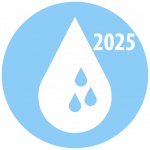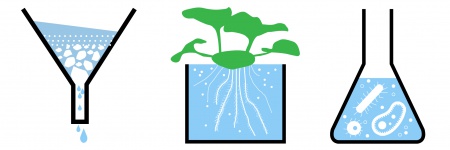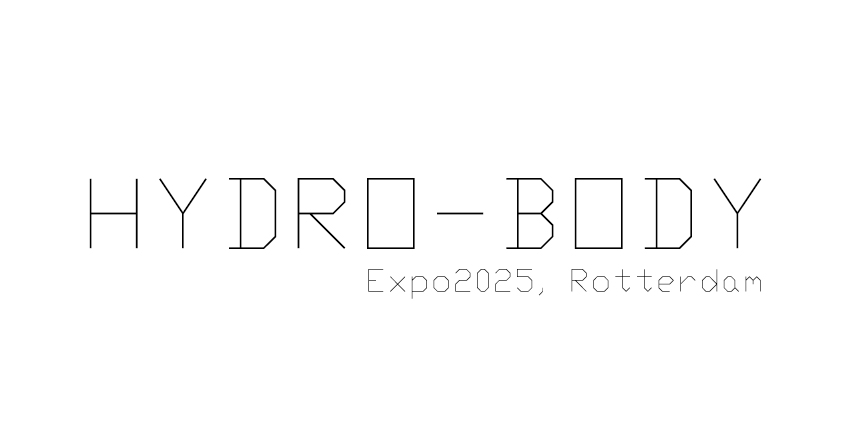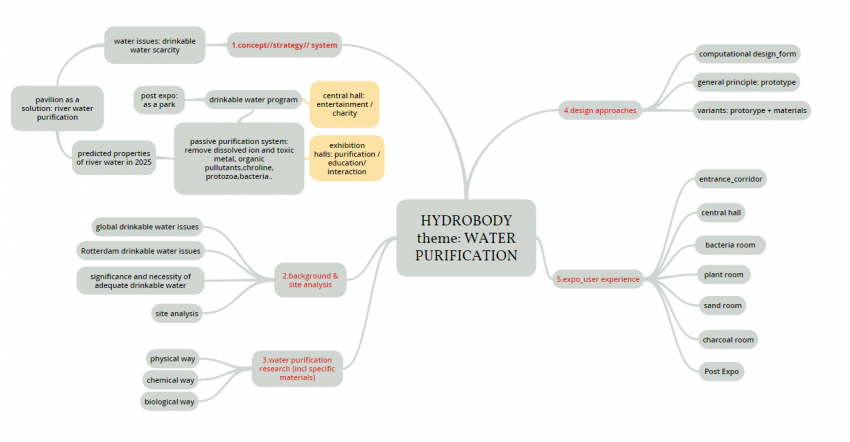Difference between revisions of "Msc1G5:Group"
(→MANIFESTO) |
(→MANIFESTO) |
||
| Line 40: | Line 40: | ||
<Br><center>'''THE HYDRO-BODY PAVILLION'''</center> | <Br><center>'''THE HYDRO-BODY PAVILLION'''</center> | ||
| − | + | <center>ADD PROJECT LOGO</center> | |
The Hydro-Body Pavilion will serve as a mechanism body to purify the water as well as didactic role models of future passive sustainable water treatment and uses. The design strategy will focus on the natural purification technique: sand, charcoal, gravel, bacteria and plant filtration and use its characteristic of each material to define different spaces and programs inside the hydro-body. People are walking into the pavilion as if they are part of a cell entering a host body, they will have the opportunity to interact with the process of water purification. The interior of space will convey the experience of entering an active organism organ with blood and vein running through its body. | The Hydro-Body Pavilion will serve as a mechanism body to purify the water as well as didactic role models of future passive sustainable water treatment and uses. The design strategy will focus on the natural purification technique: sand, charcoal, gravel, bacteria and plant filtration and use its characteristic of each material to define different spaces and programs inside the hydro-body. People are walking into the pavilion as if they are part of a cell entering a host body, they will have the opportunity to interact with the process of water purification. The interior of space will convey the experience of entering an active organism organ with blood and vein running through its body. | ||
Revision as of 16:10, 4 November 2015
Concept
MIND MAPPING
MANIFESTO

Water is the most efficient element of life. We use water not only for drinking but for agriculture, farming, manufacturing etc. The water crisis is the number one global risk on impact to society as a measure of devastation. In the near future, water sanitation and scarcity will become the global crisis, as freshwater resources that we can access could not keep up with the demand of the water consumption. Currently, ⅘ of the world population do not have access to clean water. With a billion more people to feed by 2025 and increasing industrialization, nature itself can no longer regenerate itself. Natural water including the lake, river and ocean has been contaminated by human activities. What if we could be able to help accelerate the natural water filtration process? As a result, improving the current condition of those living in poverty with contaminated water and transforming water resources in nature to be potable water in order provide a solution for future water scarcity in the next ten years.

Rotterdam has a long history with water.The city brings the innovation of how to dwell with water, since the windmill, to dry the land and remove water to the sea, to the Rotterdam water barrier, to block the storm and water from the North Sea. In 2025, Rotterdam will host the World Expo under the theme “Changing Currents” dealing with deltas in transition, with environmental, social and cultural challenges.The expo positioned in the heart of the waterways, ports, and canals. Rotterdam will be a perfect location to set an example of how can we cope with water in 2025.
The Hydro-Body Pavilion will serve as a mechanism body to purify the water as well as didactic role models of future passive sustainable water treatment and uses. The design strategy will focus on the natural purification technique: sand, charcoal, gravel, bacteria and plant filtration and use its characteristic of each material to define different spaces and programs inside the hydro-body. People are walking into the pavilion as if they are part of a cell entering a host body, they will have the opportunity to interact with the process of water purification. The interior of space will convey the experience of entering an active organism organ with blood and vein running through its body.

